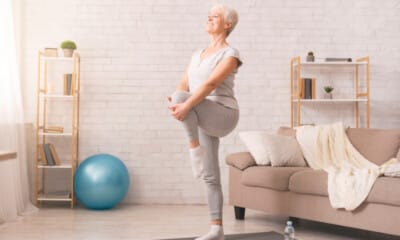The Dos and Dont’s Of Exercise After Menopause
Entering menopause signifies a significant change in a woman’s life, involving various physical, emotional, and hormonal adjustments. These changes can greatly impact overall health and wellness, emphasizing the importance for women to modify their lifestyle, including their workout routines, to address the specific needs and challenges of this phase. In this detailed guide, we explore the dos and don’ts of exercising after menopause, offering insights and recommendations to assist women in adopting a healthy and active lifestyle during this transformative period of life.
Understanding Menopause And Its Impact on Exercise
Menopause is a natural biological process that signifies the end of a woman’s reproductive years. It typically occurs during the late 40s to early 50s and involves a decrease in estrogen and progesterone levels, resulting in various physical and physiological changes. These changes can encompass mood swings, metabolic variations, alterations in body composition, and a reduction in bone density. Understanding how menopause affects exercise is crucial for developing a customized workout plan that addresses specific needs and concerns.
Embracing Cardiovascular Exercise
Cardiovascular exercise, also known as aerobic exercise, is essential for maintaining heart health, managing weight, and enhancing overall well-being, especially after menopause. Regular participation in aerobic activities like brisk walking, swimming, cycling, and dancing can assist women in lowering the risk of heart disease, stroke, and other cardiovascular conditions. Furthermore, aerobic exercise has been proven to boost mood, alleviate symptoms of anxiety and depression, and increase energy levels, providing women with a feeling of vitality and empowerment during this transitional life phase.
Prioritizing Strength Training
Following menopause, prioritizing strength training becomes increasingly important to combat age-related muscle loss, known as sarcopenia, and maintain bone density. Integrating exercises that target major muscle groups, such as squats, lunges, push-ups, and resistance band exercises, can help women retain strength, enhance posture, and improve overall mobility and independence. Additionally, strength training has been shown to boost metabolism, enhance insulin sensitivity, and reduce the risk of falls and fractures, making it a crucial element of a well-rounded exercise regimen for menopausal women.
Listening To Your Body
One of the key aspects of exercising after menopause is paying attention to your body’s signals and responding accordingly. Noticing how you feel during and after exercise and adjusting your routine based on your individual needs and limitations is crucial. If you experience discomfort, pain, or unusual symptoms, it’s important to consult a healthcare professional or fitness instructor to ensure that your exercise plan is safe and suitable for your health and fitness level. By tuning into your body’s feedback, you can maximize the benefits of exercise while minimizing the risk of injury or overexertion.
Hydration And Nutrition
Maintaining proper hydration and nutrition is essential for any exercise routine, particularly during and after menopause. Ensuring adequate water intake before, during, and after exercise is crucial for regulating body temperature, lubricating joints, and supporting cellular function. Moreover, focusing on a well-balanced diet rich in nutrient-dense foods like fruits, vegetables, whole grains, lean proteins, and healthy fats can supply the necessary vitamins, minerals, and antioxidants needed to support bone health, muscle function, and overall vitality during menopause.
Flexibility And Balance Exercises
Menopause can lead to changes in flexibility, joint mobility, and balance, increasing the risk of falls and injuries. Therefore, integrating flexibility and balance exercises into your workout routine is essential for maintaining mobility, preventing falls, and enhancing overall safety and well-being. Activities such as yoga, tai chi, Pilates, and stretching routines can help improve flexibility, increase joint range of motion, and boost body awareness and coordination, with practical hot mat Pilates exercises being a great option to reduce the risk of injury and support long-term functional independence.
Managing Stress And Rest
Menopause may bring about elevated stress levels, mood swings, and disruptions in sleep patterns, affecting overall health and well-being. Therefore, including stress-reducing activities such as meditation, deep breathing exercises, progressive muscle relaxation, or leisurely walks in your daily routine can promote relaxation, reduce anxiety, and improve sleep quality. Sufficient rest and recovery are also essential for allowing the body to repair and rebuild muscle tissue, replenish energy stores, and support optimal immune function, ultimately enhancing the benefits of exercise and promoting overall health and vitality during menopause.
Seeking Professional Guidance
While adopting an active lifestyle after menopause is beneficial for overall health and well-being, it’s crucial to seek professional guidance from qualified fitness instructors, personal trainers, or healthcare providers. These professionals can assess your specific needs, create a personalized exercise plan tailored to your goals and abilities, and offer guidance on proper exercise technique, progression, and safety measures.
Navigating exercise after menopause requires a comprehensive approach that acknowledges the unique physical, emotional, and hormonal changes associated with this life stage. Remember, exercise is not just about physical fitness but also about enhancing overall health, well-being, and quality of life as you navigate this transformative phase of life.















